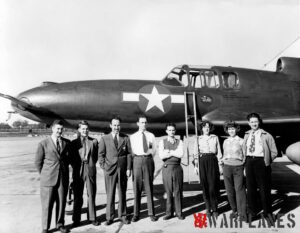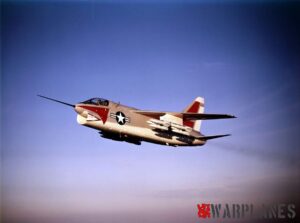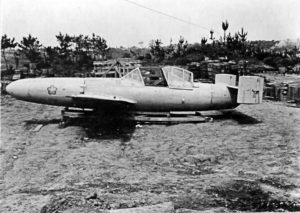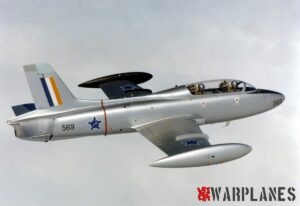A Short History of the RAF Pathfinder Force
RAF Bomber Command was Britain’s greatest and mightiest weapon during the Second World War. It was the only weapon capable of striking heavily and directly at the heart of Nazi Germany. Despite this, in the early years of the war, the effectiveness of Bomber Command was limited because of its inability to navigate accurately and deliver its destructive power precisely enough onto individual targets. It soon became apparent that the vast effort of Bomber Command would be wasted, unless an accurate means of guiding aircraft to their targets could be found.

In 1941, the idea of a special force, to lead the main bomber streams was endorsed by the then Deputy Director of Bomber Operations, Group Captain Syd Bufton. He suggested that six squadrons should be based close to each other, their aircrews enriched with 40 of the Command’s most highly experienced crews. The idea however was condemned by the new AOC-in-C, Air Marshal Arthur Harris, later to be called ‘Bomber Harris’, he believed it was likely to foster elitism and hence ruin morale. However, the Chief of the Air Staff, Air Chief Marshal Sir Charles Portal, overruled Harris and with the support of Winston Churchill a separate force was created.
Thus, on the 15th August 1942, the Pathfinder Force (PFF) was formed. The force, initially administered by No.3 Group, moved into their new headquarters at RAF Wyton, which was chosen by Group Captain (later to become, Air Vice-Marshal), Don Bennett for its good landline communications and favourable weather record.

The Pathfinder Force initially comprised of five squadrons, one from each of the operational Bomber Command Groups. The squadrons were, Nos.7 (Stirlings), 35 (Halifaxes), 83 (Lancasters), 109 “special duties” (Wellingtons) and 156 (Wellingtons). These squadrons were located on adjacent airfields at Oakington, Graveley, Wyton and Warboys.
Promising Bennett his full support and having great respect for him, Harris was still opposed to the formation of the PFF. However, he would not give PFF any leeway, and insisted that it must begin operations on the same day that the Squadrons assembled, giving them no time for training or preparation. In the end, bad weather prevented any operations. The next night Bennett sent the force out to bomb the submarine base at Flensburg. More bad weather, which had not been forecast, couple with the lack of any navigational or radar aids at that stage meant that the raid, not surprisingly, failed. Undeterred by the enforced bad start, the PFF steadily worked up and developed their techniques; results soon began to show.

One of PFF Squadron’s, No.109, was tasked with the development and testing of the new OBOE radio equipment. OBOE was destined to be one of PFF’s greatest technical aids; used to pinpointing targets and guiding the Pathfinders to them using signals from pairs of UK based stations. Apart from OBOE, the force had another radio navigational aid called GEE. This was a slightly older system but still useful and always used in conjunction with OBOE. Both of these aids were only effective up to 300 miles, Berlin was another 250 miles beyond the reach of OBOE or GEE. Another notable achievement for the PFF was the introduction of the first airborne ground mapping radar system called H2S. Trialled by the Halifax’s of No.35 Sqn, on the 30th January 1943, H2S radar was used by RAF bombers for navigation for the first time and so became the first ground mapping radar to be used in combat. Other technical aids were the flares and Target Indicators (TIs), which showed the main bomber streams where to drop their bombs. Hooded flares were developed to illuminate the target without dazzling the bomb aimers, and TIs in a spectacular range of colours marked the exact position of the target either on the ground or in the air above. After all these aids were introduced into service the accuracy of the bombers increased steadily. OBOE’s first operational trials were on the 20th December 1943, when four Mosquitoes of No.109 Sqn dropped high explosives on a German coking plant.
On the 25th January 1943 the PFF became a separate group, No.8. By this time the Pathfinders had proved themselves and at long last Bomber Command was a fully effective force. Any aircrew that was posted to PFF was conditional on two things; firstly they had to volunteer and secondly, they had to accept that a tour duty with PFF was 45 operational sorties and not 30 as in the rest of Bomber Command. This ensured that PFF gained maximum valve from the highly experienced crews, it was not uncommon for aircrew to undertake more than 45 sorties.

In April 1943 a further two squadrons, both equipped with Lancasters, joined the PFF, No.405 of the Royal Canadian Air Force, which was based at Gransden and No.97 based a Bourn. Three months later PFF moved its headquarters from Wyton to Castle Hill house in the local town of Huntingdon and in the same month a further two squadrons joined PFF, Nos. 105 and 139 Sqns, both equipped with Mosquitoes and based at Marham. In the following year a further three more squadrons joined the group, Nos. 627 (Mosquitoes), 692 (Mosquitoes) and 635 (Lancasters).

Over the period of the 30th & 31st March 1944 PFF and Bomber Command set out to bomb Nuremburg. Of the 795 Bomber Command aircraft, 95 failed to return. The reason for this disastrous loss rate (11.9%) was that the route devised by PFF which involved several doglegs, to avoid heavy defences and disguise the real objective was overruled by Bomber Command and changed to a more direct route. This lead the force straight into the German defences and the bombers were consequently picked off by night fighters. Bad luck was again to hit PFF the following month when No.582 Sqn (Lancasters) joined the Group but immediately afterwards Nos.83, 97 and 627 Sqns were transferred to No.5 Group to undertake Pathfinder trials. Throughout the rest of the war there was a growing trend for other Bomber Command Groups to do their own advanced navigation, with their crews being trained in techniques evolved by PFF during the vital earlier years. However, after this drain on its strength, PFF began to recover and to obtain new units. These were mostly Mosquitoes and these became the Light Night Striking Force (LNSF). Many of the LNSF Mosquitoes carried the 4,000lb “Cookie” bomb as far as Berlin. They also flew diversionary raids to distract attention away from the main bomber streams.

In April 1945 the PFF reached its peak strength with eight Lancaster and eleven Mosquito units, this included three that had been detached to No.5 Group. By the end of the war in Europe in May 1945, the PFF had flown a total of 50,490 sorties against 3,440 targets. The number of PFF aircrew killed on operations totalled 3,618. Of the 32 Victoria Crosses awarded to Bomber Command during World War 2, three went to PFF pilots, Bazalgette, Palmer and Swales, all posthumously.

Extract from the London Gazette of Friday 20th April 1945
The King has been pleased to confer the Victoria Cross on the under mentioned officer in recognition of his most conspicuous bravery:
Captain Edwin Swales DFC
South African Air Force, No.582 Squadron
Captain Swales was “Master Bomber” of a force of aircraft, which attacked Pforzheim on the night of February 23rd, 1945. As “Master Bomber”, he had the task of locating the target area with precision and giving aiming instructions to the main force of bombers following in this wake.
Soon after he had reached the target area he was engaged by an enemy fighter, and one of this engines was put out of action. His rear guns failed and his crippled aircraft was an easy prey to further attacks. Unperturbed, he carried on with his allotted task; clearly and precisely he issued aiming instructions to the main force. Captain Swales’ aircraft was put out of action, almost defenceless, he stayed over the target area issuing this instructions until he was satisfied that the attack had achieved its purpose.
Captain Swales did not, however, regard his mission as completed. His aircraft was damaged, such that, its speed was so much reduced it could only be kept in the air with great difficulty. The blind-flying instruments were no longer working; he was determined at all costs to prevent this aircraft and crew from falling into enemy hands, he set course for home. After an hour he flew into thin-layered cloud, he kept his course by skilful lying between the layers, but later heavy cloud and turbulent air conditions were met. The aircraft, by now over friendly territory, became more and more difficult to control; it was losing height steadily. Realizing that the situation was desperate Captain Swales ordered this crew to bale out. Time was very short and it required all this exertions to keep the aircraft steady while each of this crew moved in turn to the escape hatch and parachuted to safety. Hardly had the last crewmember jumped when the aircraft plunged to earth, Captain Swales was found dead at the controls.
Intrepid in the attack, courageous in the face of danger, he did his duty to the last, giving his life so that his comrades might live.
On the 12th May 1945, Air Vice-Marshal J R Whitley succeeded Bennett as AOC Pathfinders, and on the 15th December No.8 (PFF) Group was disbanded.

Listed below are the squadrons that formed No.8 (Pathfinder Force) Group.
Station and aircraft details are for when the Units were part of the Pathfinder Force.
No.7 Squadron
Station – Oakington from Oct 1940 onwards.
Aircraft – Short Stirling I & III Aug 1940 – Aug 1943, Avro Lancaster B.I & III Jul 1943 onwards.
No.35 Squadron
Station – Graveley from Aug 1942 onwards
Aircraft – Handley Page Halifax B.I, B.II & B.III Nov 1940 – Mar 1944, Avro Lancaster B.I, B.III Mar 1944 onwards.
No.83 Squadron
Station – Wyton Aug 1942 – Apr 1944, Coningsby Apr 1944 onwards.
Aircraft – Avro Lancaster B.I & B.III May 1942 onwards.
No.97 Squadron
Station – Bourn Apr 1943 – Apr 1944,
“A”, “B” & “C” Flights detached to Gransden Lodge, Graveley and Oakington respectively during Aug/Sep 1943,Coningsby – Apr 1944 onwards.
Aircraft – Avro Lancaster B.I & B.III Jan 1942 onwards.
No.105 Squadron (joined PPF in 1943)
Station – Marham Sep 1942 – Mar 1944, Bourn Mar 1944 onwards.
Aircraft – De Havilland Mosquito B.IV, B.IX & B.XVI Nov 1941 onwards.
No.109 Squadron
Station – Wyton Aug 1942 – Jul 1943, Marham Jul 1943 – Apr 1944, Little Staughton Apr 1944 onwards.
Aircraft – De Havilland Mosquito B.IV, B.IX & B.XVI Dec 1941 onwards.
No.128 Squadron
Station – Wyton Sep 1944
Aircraft – De Havilland Mosquito B.XVI, B.XX & B.XXV Sep 1944 onwards.
No.142 Squadron
Station – Gransden Lodge Oct 1944 onwards.
Aircraft – De Havilland Mosquito B.XXV Oct 1944 onwards.
No.156 Squadron
Station – Warboys Aug 1942 – Mar 1944, Upwood Mar 1944 onwards.
Aircraft – Vickers Wellington IC & III Feb 1942 – Jan 1943, Avro Lancaster B.I & B.III Jan 1943 onwards.
No.162 Squadron
Station – Bourn Dec 1944 onwards.
Aircraft – De Havilland Mosquito B.XX & B.XXV Dec 1944 – July 1945.
No.163 Squadron
Station – Wyton Jan 1945 onwards.
Aircraft – De Havilland Mosquito B.XVI & B.XXV Jan 1945 onwards.
No.405 Squadron, Royal Canadian Air Force
Station – Gransden Lodge Apr 1943 onwards.
Aircraft – Handley Page Halifax B.II Apr 1942 – Sep 1943, Avro Lancaster B.I, B.III & B.X Aug 1943 onwards.
No.571 Squadron
Station – Downham Market Apr 1944, Oakington 24th Apr 1944 onwards.
Aircraft – De Havilland Mosquito B.XVI Apr 1944 onwards.
No.582 Squadron
Station – Little Staughton Apr 1944 onwards.
Aircraft – Avro Lancaster B.I, B.III Apr 1944 onwards.
No.608 Squadron
Station – Downham Market Aug 1944 onwards.
Aircraft – De Havilland Mosquito B.XX, B.XXV & B.XVI Aug 1944 onwards.
No.627 Squadron
Station – Oakington Nov 1943 – Apr 1944, Woodhall Spa Apr 1944 onwards,
Aircraft – De Havilland Mosquito B.IV, B.IX, B.XVI, B.XX, B.XXV Nov 1943 onwards.
No.635 Squadron
Station – Downham Market Mar 1944 onwards.
Aircraft – Avro Lancaster B.I, B.III & B.VI Mar 1944 onwards.
No.692 Squadron
Station – Graveley Jan 1944 onwards.
Aircraft – De Havilland Mosquito B.IV, B.XVI Jan 1944 onwards.
1409 (Meteorological) Flight
Station – Oakington 1st Apr 1943 – Jan 1944, Wyton Jan 1944 onwards.
Aircraft – De Havilland Mosquito

Forming a part of the RAF Wyton Heritage Centre, the RAF Pathfinder Collection proudly displays one of the largest unpublished collections of PFF imagery in existence. Accompanying this photographic collection are many artefacts associated with PFF, including items recovered from World War II crashed Pathfinder aircraft.
The idea for a Pathfinder Collection goes back to the summer of 1995, when it was suggested that a temporary display should be set up in anticipation of that year’s Pathfinder Sunday (an annual event held each August) for the benefit of the Pathfinder’s and their families. It generated an overwhelming interest and a request from those present for a more permanent museum.

Thus, the PFF collection was born and continues to grow with the full support of successive Station Commanders and sections around RAF Wyton. Other areas within the Heritage Centre are the Imagery Intelligence Collection (an area in which I have a main interest), looking at the history of Photographic Reconnaissance and the Wyton History Timeline, this a large display showing the wide range of activities that have happen at RAF Wyton from 1912 to the present day.
The Heritage Centre is manned by a small number of volunteers like myself, who wish to ensure that the memories of the brave members of the Pathfinder Force, the role of RAF Wyton and the history of Photographic Reconnaissance is not forgotten.
Mick Gladwin
Wyton Heritage Centre Volunteer







A less known story. Thank you for this artcle.
Your photo “The crash aircraft flown by Captain Swales” shows the tailplanes of a Halifax, therefore not the aircraft piloted by Ted Swales
Alex, totally correct, will have the image removed. It is my understanding that the crashed Halifax is in fact the one flown by Sqn Ldr Sales, who was awarded the DSO for saving himself and his crew.
Hi my Great uncle Thomas scallion Brady is in front of the Halifax of 35 squadron if you have anymore photos of 35 or 635 squadron where he was posted and died on a mission to Stettin would be great to see them
Alex,
You are totally correct. The crashed Halifax is that of Sqn Ldr Sales who was award the DSO for saving his crew (and himself) before the aircraft was destroyed.
Great site , However you seem tyo have missed out 139 Jamaica Squadron (my late fathers squadron) from your list of 8 Group Pff. Maybe it is my old eyes but seems to be so.
Seeking information about my cousin, Gabrial Donald of Glasgow, Scotland, who was imprisoned after his Mosquito caught fire on a raid over Germany. He subsequently escaped.
Gabrial was my Boss 1966-1980 at WIG- University of Glasgow
Gabrial was my Boss 1966-1980 at WIG- University of Glasgow my e mail: iha551@iinet.net.au Gabrial told me some stories of his experiences as a POW
Excellent & informative stuff. I am in touch with a family of HJ Hudson, a flight engineer on the PFF Lancaster of 7Sqn shot down on 25th June 1943 near Rilland, Holland. John Hudson evaded capture and returned via the Comet line. More to the point, 7(PFF)Sqn appear to have received Lancasters from May 1943. ED595 B.III Lancaster being destroyed on 25th June resulting in a mixture of KIA & POW of aircrew. The senior officer in this crash was aged 23: Wing Commander Bob Barrell, sadly losing his life with a parachute that failed to open.
Hello.
I am hoping to find information about Sqn Leader Eric hugh montgomery Nesbitt of 7 Sqn lost with all crew 22/11/43 lancaster jb155 near a village called Hope, Germany.
I have the actual telegram advising his father, the Rev E J W Nesbitt of his sons loss and want to know more.
Hugh Nesbitt was my Uncle on my Mother’s side (and I was named after him), but unfortunately I have very little information about his wartime career. His father, Eric John William Nesbitt was Rector at Barnack (1937-1944) and Stoke Albany (1944-1955) where Hugh’s name is on their War Memorial. He had five brothers and sisters now all deceased with one exception. His memorial stone is Grave 8 Plate 6 Row 4 Limmer Hanover.
Hi
Sorry I havnt replied.
I have the Telegram and envelope informing the rev.Eric Nesbitt of the death of his son Eric Hugh.
I found it in a junk shop !!…I would very much like to learn of his family in the hope to return the Telegram to them.
Hi Barry. I’m wondering if Hugh actually replied to you in regard to the telegram? I’m Sqn Ldr Eric Hugh Montgomery Nesbitts great nephew. Myself and his niece (my mother) would love to know more about the telegram. Thanks
Hi Barry,
Could you email me at martinshea21@gmail.com? My mother is Erics granddaughter and would love to see the telegram. Thanks
Hello Barry, what an amazing find!!
my maiden name is kathleen Nesbitt. My father, ASB Nesbitt, was EHM Nesbitt’s younger brother, also in the RAF during WW2. I visited my uncle Hugh’s grave near Hanover 10 years ago, & I have photographs of his last resting place, as well as some of him in old family photos.
I have been reading my mother’s wartime letters to my father and I think she went out with ‘Little Hugh Nesbitt’ the night before he set off for ‘Monday’s big Berlin raid.’It is quite a personal entry but happy to pass it on to family if they wish.
Just come across photos of Eric nesbitt in uniform and reams of family documents in a “junk” shop in Norwich if anyone from nesbitt family is interested. Wealth of old photos and family trees that have been thrown out. Very sad but if anyone from the family is interested it’s fascinating.
Hello Rob ; did you get an answer to this ? My wife’s mother was the youngest daughter of Eric Nesbitt and sister to Sq Leader Hugh Nesbitt .
I may also have a photograph of Hugh Nesbitt that I found among my mother’s letters. And would like to know if it is indeed him. Is there a facility for sharing photographs on this site? How sad that all those photos should have been thrown out.
Hi. The photo of one of the men (far left) in front of plane emblazoned with serial no nd759 bears a striking resemblance to my late great grandfather Robert graham Peter, as does another of a group in front of plane with ‘M’ on side. Any chance you can advise where you sourced these from so I can take a closer look at these with my nanna (his daughter)?
He was part of 35 Squadron, Group 8 Pathfinder force so unsure if it could be him or not.
Thanks
Thanks
Joel
I was wondering if anyone knew any of the sorties that 105 Mosquito Squadron flew from 1944 on, my father John N Owen was a pilot on that squadron.. I wanted to find out where they flew.
I was wondering if anyone knew any of the sorties that 105 Mosquito Squadron flew from 1944 on, my father John N Owen was a pilot on that squadron.. I wanted to find out where they flew.
Hello Jeannette, 105 Squadron moved from Marham to RAF Bourn near Cambridge to become a Pathfinder Squadron on April.01st 1944. They stayed at Bourn till June 1945 moving to RAF Upwood.
Want to know…..Raid at Wuerzburg 16/3/1945…2 Mosquitos of the LNSF dropping air mines and petrol-jelly bombs at people fleeing the fire about 22.00 hours GMT….WHICH SQN DID THEY BELONG TO? 627 Sqn they were not as these 7 a/c were ground markers guided by the master bomber Peter Johnson (Author of “The withered Garland). Even after 72+ years I can still hear the sound of the airmines which travelled above me. I know my query is very late but the experience not forgotten (I was then 13 years of age). A reply, one way or the other would be appreciated.
Hi my Great uncle Thomas scallion Brady is in front of the Halifax of 35 squadron if you have anymore photos of 35 or 635 squadron where he was posted and died on a mission to Stettin would be great to see them
Hello, It was thought in my family that my Father’s brother was in the Pathfinders in WW2 are you possibly able to advise me as to the best way of trying to confirm this? I am trying to help his daughter (who is ill). who simply does not know, I would be very grateful, thank you Chris.
Hi,
139 Squadron still missing from the kist of Squadrons
DW
Sorry. In your SQN listing there is no mention of 139 SQN. My father Sqn Ldr WAG Gallienne DSO DFC and Bar served with both 83 SQN and 139 SQN. He was stationed at; RAF Wyton, RAF Marham and RAF Upwood. I thought I would help you update your records. Best regards
David Gallienne